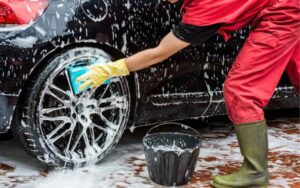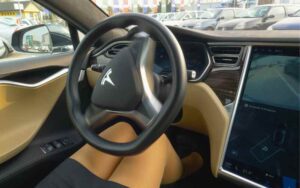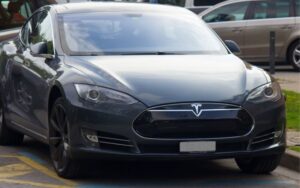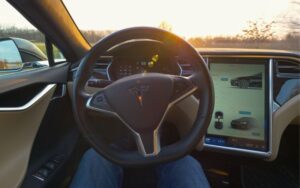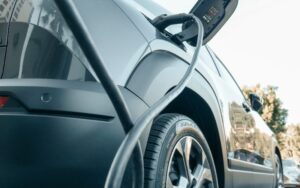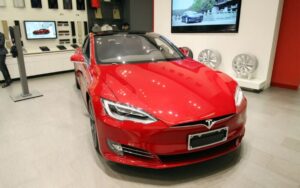Do Teslas Have Brake Pads? (Must Know This)
Last updated on September 12th, 2023 at 03:04 am
Knowing all the information about a vehicle before the purchase goes a long way in guiding your choice. It helps you make a more personalized decision.
With Tesla cars, it’s easy to opt for one due to popular opinion. But it may turn out not to be a great fit for you.
The car’s performance may not suit you, and you’ll end up disappointed. Or some of the car’s features are different from your liking.
Tesla vehicles have brake pads in their braking system. But, the brake pads are unlike those you find with other car brands. Tesla brake pads work quite differently; better still, they have a longer life span. Among the things that make Tesla unique is the braking system, with many standout features.
You may be one of the people wondering if Tesla brake pads last forever. But don’t worry; this article will give you all the necessary answers.
Here you’ll also learn how Tesla’s braking system works, what makes it unique, and the warranty information on brake pads. In the end, you’ll know the myths and facts about Tesla brake pads.
Do Teslas Have Brake Pads?
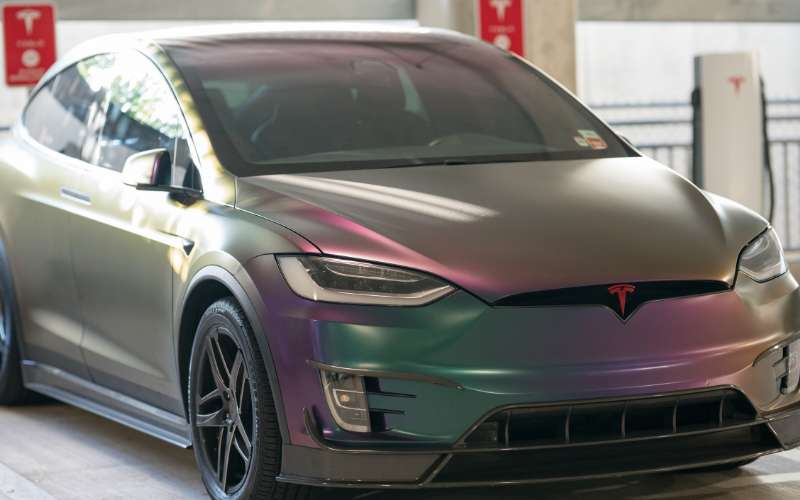
Yes, Tesla vehicles do have brake pads. But the company didn’t develop vehicles based on the usual brake system other car brands use.
Contrary to opinions that some Tesla models don’t have brake pads, that’s not true. But in one case, a buyer took delivery of her Tesla Model 3 with a missing brake pad.
Due to the error, the buyer, April Gilmore, noticed a scraping sound on the driver-side rear wheel. The missing brake pad turned out to be an error from the factory.
To date, that’s the only recorded case of a Tesla model missing a brake pad.
Now, true to the words of Elon Musk, Tesla brake pads are extremely durable. Also, they comprise high-quality materials in contrast to other manufacturers.
Also, the brake pads go through a process of careful engineering to improve their strength. How the brake pads work in the braking system also makes them last longer.
That’s due to their setup with a regenerative braking system on Tesla models. The system works by helping drivers slow down their cars without using the brakes.
But the use of brake pads is still necessary. That’s because the regenerative braking (or Regen) system is only good to go when it’s convenient for the driver.
Using the Regen system limits friction on the brake pads. Thus, it helps braking mechanisms last longer. Then, as per estimates, service life shoots up by 50%.
At this point, you now clearly know that all Tesla models have brake pads. Next, we’ll look at Tesla’s braking system and more details about its brake pads.
What Kind of Brakes Does a Tesla Have?
All Tesla vehicles work with electric disc brakes on their wheels. Disc brakes are the popular choice for all modern cars, as the use of drum brakes is now hard to come by.
It’s not about popular opinion, but disc brakes are more efficient than drum brakes.
The Tesla setup is similar to what other cars offer, but the difference here is the use of regenerative braking. Regen makes the braking system more efficient in many ways.
Apart from reducing friction, regenerative braking can improve the range of a Tesla vehicle. But, relax, it’s not a magic trick; you’ll understand how it works in the next line.
The working principle is easy to understand. When a driver initiates regenerative braking, the system channels any excess energy back to the car battery.
Thus, that’s like charging your car battery even as you drive around. That’s genius if you think about it. But hold on one second before you give too much credit to Tesla.
Although the company uses regenerative braking, it’s not unique to Tesla. Sprague Electric Railway & Motor Company introduced regenerative braking back in 1886.
In Tesla vehicles, drivers don’t need a special command or process to activate regenerative braking. Instead, it sets in automatically when a driver’s foot is off the accelerator.
However, a Tesla’s battery state can affect the use and efficiency of the regenerative braking system. One instance is when the car battery already has a full charge.
Then the car may not slow down as fast as it normally does. Also, regenerative braking can cause varying results when the car battery is cold.
But overall, regenerative braking makes Tesla’s braking system more efficient, safe, and reliable.
Do Teslas Ever Need Brake Pads Replaced?
You’ll need to replace your Tesla brake pads at some point. Despite their durability, they are not wholly resistant to friction; thus, they are subject to wear.
However, it usually takes a very long time before you change a Tesla brake pad. Per Tesla owners, the life span is at least twice that of regular brake pads.
For brake pads, the factor for replacement leans more on the overall distance you take them through than time. Regular brake pads fall within 25,000 to 60,000 miles.
But Tesla owners have reported driving their cars for about 100,000 to almost 300,000 miles before changing their brake pads. That’s a very long stretch!
Another factor to consider in how fast your brake pads wear is their use on salted roads during winter. Using them there will cause them to wear out faster than usual.
To assess if your brake pads are due for changing, it helps to inspect them routinely. But physical inspection is only possible when you remove the tire and wheel.
However, Tesla brake pads carry wear indicators to help you know when to change them. The indicator is a thin metal strip joined to the brake pad.
When the brake pad wears down, the wear indicator will rub against the rotor and make a squealing sound. So you can assess your brake pads when you notice the sound.
The table below shows the service limit of brakes on Tesla motors. So you can move to change your brake pads when they reach these limits.
| Brakes | Specifications |
|---|---|
| The thickness of the front brake pad (minus the back plate). | New: 0.41 inches or 10.5 mm (minimum).Service limit: 0.09 inches or 2.3 mm. |
| The thickness of the rear brake pad (minus the back plate). | New: 0.33 or 8.5 mm (minimum).Service limit: 0.11 inches or 2.7 mm. |
When your brake pads reach these limits and are due for changing, please reach Tesla service to schedule an appointment.
Are Brake Pads Covered Under Tesla Warranty?
Yes, the Tesla warranty covers the repair and replacement of brake pads, but it’s a limited warranty. This service covers the repair of faults or damages that classify as failures.
These failures have to be on the part of manufacturers and not the driver. Thus you can’t be privy to the warranty if you damage your brake pads.
Also, the warranty doesn’t cover repairs or replacements when your brake pads wear out. So you’ll have to pay for any service costs in that case.
But you get a free service if Tesla confirms the fault with your brake pads is due to failure. Then, all you have to do is schedule an appointment to get the fault fixed.
Other conditions for enjoying the warranty include:
- Buying the brake pads directly from Tesla over the counter or online.
- Have Tesla Service or a Tesla Collision Center buy and install the brake pads for you.
So, you’ll not be privy to the limited warranty if you buy the brake pads from an unauthorized source.
The limited warranty is valid only for one year or 12,500 miles. So the warranty expires when you exceed either of the stated limits.
You should note that the warranty starts counting from the purchase date of your brake pads.
That’s to say that the warranty period counts even when you’re not using your Tesla vehicle. So, keep that in mind to help you know when your warranty period will expire.

Hey, I’m Michael Davis, a 35-year-old with a degree and a love for cars and tech. Since I was a kid, cars have been my thing—so much that I even thought they ran on magic beans! Fast forward, and I’ve built Vehicle Army, your one-stop-shop for easy-to-understand car facts.

